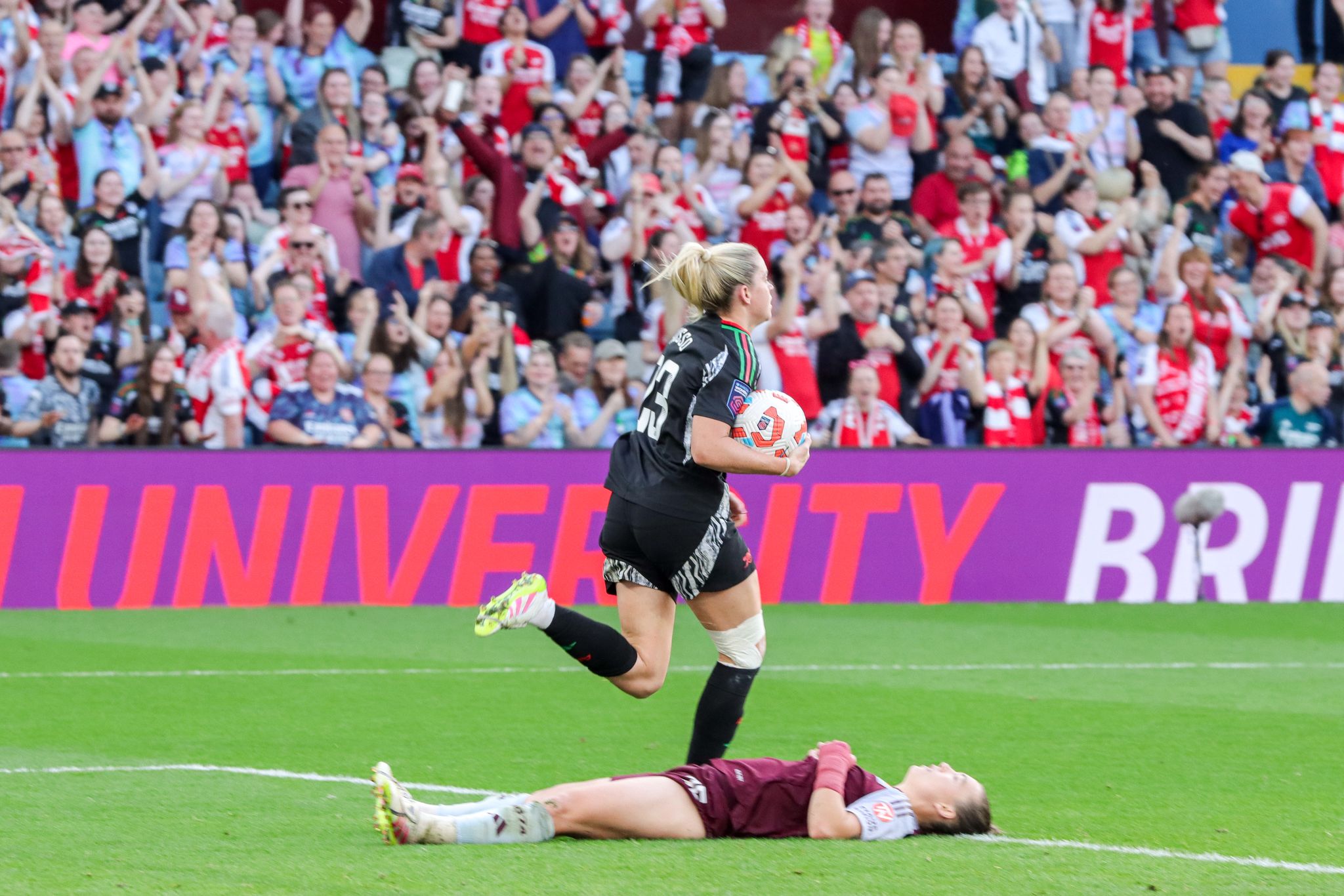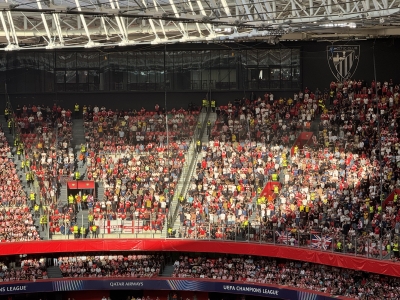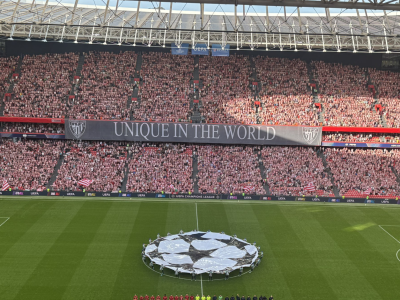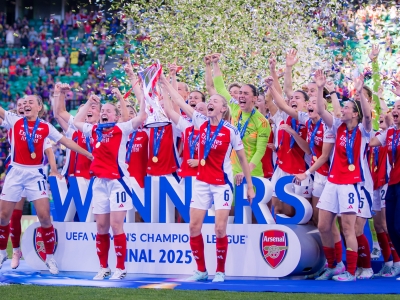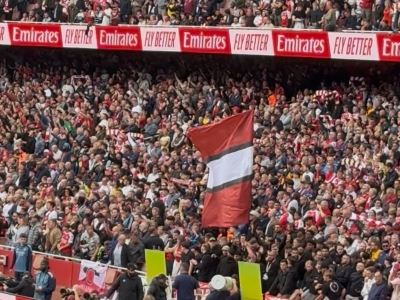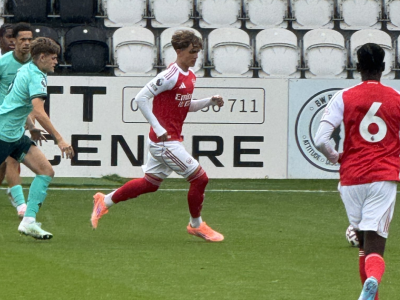Introduction
There’s been a lot of online disappointment about Arsenal not taking all three points against Manchester United. And while frustration is understandable, given how crucial points are in the WSL, I wasn’t disappointed by the overall performance.
Away at United has always been a difficult fixture, and a 0-0 draw feels like a fair reflection. Arsenal controlled 57 per cent of possession, leaving United with 43 per cent, but the game was tight and intensely contested, particularly in wide areas and transitional moments.
This fixture highlighted both the strengths of Renée Slegers’ system and areas for refinement, particularly when facing a disciplined defence. Arsenal demonstrated tactical flexibility, defensive organisation, and smart transitions, but the attacking combinations that worked so well against West Ham in the second half were largely neutralised by United’s disciplined defence.
Defensive organisation and individual performances
Katie Reid was undoubtedly Arsenal’s standout performer. Her timing, positioning, and defensive awareness were exemplary. She consistently tracked Melvine Malard (then Elisabeth Terland), won duels, anticipated runs in behind, and recovered the ball under pressure.
Reid’s ability to drive forward with possession, pass through the lines, and intervene decisively in transitional moments silenced critics who doubted her starting role. She demonstrated not only composure but tactical intelligence, repeatedly reading United’s movements and neutralising their threats before they developed.
Daphne van Domselaar and the backline worked cohesively under sustained pressure. United repeatedly sought to exploit Arsenal’s fullbacks with quick transitions, particularly via Jess Park and Celin Bizet.
Emily Fox’s pace and spatial awareness were pivotal; she covered channels, supported fullback movements, and carried the ball forward in moments where Arsenal sought to relieve pressure. Fullbacks were pushed high in possession yet remained disciplined defensively, preventing United from capitalising on spaces behind them.
The defensive line maintained structure despite high pressing and quick positional shifts, demonstrating how Slegers’ system balances attacking intent with risk management. Arsenal’s organisation also minimised threats from set pieces, with coordinated marking and timely interventions ensuring United rarely generated clear-cut opportunities — a notable improvement considering Arsenal had conceded from a set piece against United in their final WSL fixture of last season.
Midfield battles and system analysis
Arsenal’s midfield configuration relied heavily on Emily Fox and Katie McCabe as connecting players between attack and defence. Fox had dual responsibilities: assisting the build-up in possession and dropping back to cover transitions.
Mariona Caldentey frequently dropped deep, seeking to link play or find Alessia Russo, but occasional loose passes disrupted Arsenal’s rhythm. Despite this, transitional sequences often opened space, with Caitlin Foord’s movement into midfield, followed by passes wide to Olivia Smith, creating opportunities for positional overloads and potential penetration through the channels.
The Stina Blackstenius–Russo partnership, effective against West Ham in the second half, struggled against United’s compact and disciplined backline. Blackstenius’ runs behind Dominique Janssen were largely nullified, either due to offside calls or defensive pressure, and crosses from wide areas were consistently dealt with.
Tactical adjustments, including the introduction of Frida Maanum, Chloe Kelly, and Beth Mead, improved Arsenal’s control in midfield and created moments of second-half dominance, though the final delivery into the box remained a limiting factor.
A notable observation was how Arsenal attempted to manipulate space between United’s defensive lines. Russo often dropped deeper to receive the ball, linking to Reid or Fox before progressing it wide or back into midfield. Foord’s intelligent rotation, moving from wide to central positions, allowed Arsenal to exploit pockets in front of the backline, though execution, particularly in the final third, prevented these sequences from converting into goals.
Attacking patterns and set-pieces
Arsenal demonstrated tactical creativity, even if it did not translate into a scoreline. A key passage of play saw Reid to Russo, who dropped deep, then out wide to Fox, back to Reid, and Smith progressing into midfield. Foord then dropped in front of the United backline, attempting to exploit space behind the defensive line. United cleared effectively, but the sequence highlighted Arsenal’s understanding of positional interplay and the potential for overloads in wide and central areas.
Set pieces were generally well-executed but repeatedly neutralised. Low-driven corners, short corners, and back-post deliveries tested United but failed to create clear chances. Smith forced Phallon Tullis-Joyce into a save, Foord’s header went wide under pressure from Malard, and subsequent second-ball opportunities were not fully capitalised upon.
Arsenal’s forward line demonstrated positional intelligence, but final delivery and composure in key attacking moments remain areas for refinement. The combination of Blackstenius, Russo, Foord, and Smith generated movement, but United’s defensive discipline restricted clear opportunities.
Second-half adjustments and tactical insights
Arsenal became more composed and structured in the second half. Maanum’s introduction allowed Arsenal to hold the ball under pressure, win fouls, and disrupt United’s midfield rhythm. Fullbacks pushed higher, supporting wide attacks and attempting to create overloads, though crosses were often cleared.
Mead and Kelly added energy and depth, helping maintain positional balance while also supporting transitional attacks. Despite possession dominance and improved structure, Arsenal were unable to convert sustained pressure into goals, highlighting the challenge of breaking down high-quality, well-drilled defences like United’s.
Key takeaways
Arsenal’s defensive organisation reduced mistakes, maintained solid coordination, and provided effective cover for fullbacks under pressure. Individual brilliance from Reid and Little combined defensive responsibility with attacking contribution. The Blackstenius–Russo partnership proved less effective against compact defences, suggesting Smith and Blackstenius could be leveraged as substitutes in these kinds of games.
Transitional play, particularly Foord and Fox’s movement, created space, though execution in final passes remains a focus. Set-piece delivery and conversion from corners and free-kicks remain opportunities for improvement. Arsenal showed tactical maturity and resilience in a high-stakes away match, proving they can compete with the top WSL sides. While three points weren’t secured, the performance provides a blueprint for balancing possession, defensive organisation, and attacking creativity.
The immediate challenge: Arsenal vs Aston Villa
After a postponed fixture for Aston Villa, Arsenal face them on Saturday lunchtime. Villa have not played recently and struggled to convert against Chelsea, giving Arsenal the chance to assert control early. Defensively, Arsenal need to maintain organisation, limit risky turnovers in midfield, continue disciplined fullback play while exploiting space in wide areas, and prevent Villa transitions, particularly through quick ball circulation or overlaps.
Offensively, Arsenal must capitalise on possession, ensure final balls reach attacking players effectively, utilise wide forwards in linking midfield to attack, and rely on Mariona and Russo for creativity and incisive passes through lines. Fullbacks pushing higher will create overloads in wide areas and support attacking sequences.
Key factors include set-piece execution, timing and positioning of fullbacks to exploit space, midfield control without over-committing, and maintaining composure under pressure with decisive finishing.
Arsenal have the opportunity to translate tactical understanding and possession dominance into tangible results. Building on the disciplined showing at Manchester United, a strong performance against Villa could consolidate momentum and strengthen their challenge in the WSL.

